Deckbuilding for EDH is a far cry from the hyperspecialized, metagamed world of Constructed, but for some reason I keep seeing players applying the rules they learned at tournaments to the big table. Sure, some of the tricks that work there fit right in to the world of EDH, but when games go long and you’re forced to use a deck with 100 different cards in it, you need to start expanding your thinking.
I preface all of this by saying that these are fundamental guidelines for EDH deck building, and are by no means a master class. If you know what you’re doing, feel free to disregard what I say, or even better, point out the instances where you disagree with me in the comments!
Ramp
In multiplayer, every deck needs it. Period. EDH is about big spells, and the sooner you are able to play those big spells, the better. Just because you’re not running green doesn’t mean you’re off the hook, either – it just means you have to make up for the lack of solid land-based ramp with artifacts. While little stuff like [card]Rampant Growth[/card] and signets that add one net mana to your reserves are nice, the ones you really want to look out for are cards that either search for more than one land or tap for more than one mana. A [card]Gilded Lotus[/card], for instance, taps for three colored mana. That not only is a powerful ramp effect, that’s card advantage, right there – your lotus is pulling the weight of three lands. Watch out, though, because artifact destruction is all over the place, and powerful mana rocks like the Lotus tend to be attractive targets for people’s [card]Shatter[/card] effects. If you have an option between putting an artifact or a land-based ramp spell, go with the land. Artifacts can often let you tap them the turn they come into play, but the resilience that lands offer in the face of removal is more than worth the slight sacrifice in speed. Usually.
Disruption
The exact amount of disruption you run boils down a lot to player preference – do you always want to have the perfect answer waiting for you in your deck, or would you rather squeeze in more awesome cards to support your own game plan? Personally, disrupting my opponents is one of my favorite aspects of the game, so I tend to run an extremely robust removal suite in each of my decks. Other people like to play politics and count on other players for answers. That said, while the overall quantity of disruption is up to you, there are some guidelines when it comes to choosing the right cards for your deck.
Good disruption in EDH is either powerful or fast. Powerful cards include sweepers like [card]Hallowed Burial[/card] that can take care of an entire board of creatures or [card]Into the Core[/card] that can eliminate the two most problematic artifacts without disrupting your own. Typically they cost 4 or more mana, and are often sorcery speed. They also deal with multiple cards at once – essential when you have to measure your card advantage against an entire table’s worth of opponents. Fast removal tends to be cheaper and typically only deals with one target at a time. This will leave you down a card compared to the rest of the table, but oftentimes having an instant-speed answer to someone’s combo or being able to blow someone out with a combat trick is absolutely invaluable. Some of the perennial favorites among the tables I play at are [card]Krosan Grip[/card], [card]Swords to Plowshares[/card], [card]Wipe Away[/card], and [card]Sudden Spoiling[/card]. A strong deck will run both types of cards.
Remember that threats in EDH come in more than one form – oftentimes the card that you really need to get rid of isn’t a creature, artifact, or even enchantment, but a land like [card]Volrath’s Stronghold[/card] that keeps bringing back cards from their graveyard. Packing lands like [card]Strip Mine[/card] and [card]Tectonic Edge[/card] will help immensely in dealing with powerful lands, and bringing along artifacts like [card]Relic of Progenitus[/card] and [card]Tormod’s Crypt[/card] will keep your opponents from abusing their graveyard too much.
Card Draw
Nothing is worse than topdecking in a multiplayer game. Take that same feeling of helplessness and despair you feel in 1v1, and multiply it by the number of opponents you have. Card draw isn’t just nice in EDH, it’s absolutely necessary if you are looking to tangle with more than one player. Luckily enough, each color has access to card drawing effects of one form or another, and a number of artifacts (and even a land!) exist to keep your hand full in the mid-to-lategame. The same rule applies to card draw as applies to ramp: the more cards it draws you, the better. Given the choice between [card]Divination[/card] and [card]Tidings[/card], take [card]Tidings[/card] every time. Being able to activate the effects repeatably, cheaply, and at instant speed is also extremely valuable.
While blue is the color traditionally associated with card draw, each color has access to effects that can put cards in your hand. White has cards that get plenty of lands into your hand like [card]Tithe[/card] and [card]Land Tax[/card], green has a number of creature-based draw spells like [card]Momentous Fall[/card] and [card]Soul’s Majesty[/card], red is known for dumping its hand and drawing a fresh one with cards like [card]Wheel of Fortune[/card], and black has cards like [card]Necropotence[/card] and [card]Promise of Power[/card] that have taught Magic players young and old that one card for one life is a very good deal. Artifacts can also be a great source of card advantage, and some of the most popular are [card]Mind’s Eye[/card], [card]Tower of Fortunes[/card], and every token deck’s favorite, [card]Skullclamp[/card].
Pressure
Much to the dismay of Spiky tournament players everywhere, big smashy creatures like [card]Grave Titan[/card] and [card]Wurmcoil Engine[/card] are not finishers in EDH. They occupy a niche more along the lines of a [card]Knight of the Reliquary[/card] or [card]Vengevine[/card] in Extended – a powerful threat that can end a game when left alone…but won’t win a game on it’s own. Pressure is what keeps combo players honest and punishes players for not running answers in their decks. If you get taken from 40 to 0 by a single unmolested [card]Wurmcoil Engine[/card] in EDH, let’s be honest – you deserved what you got. For the non-creature inclined, this particular niche is occupied by “pressure vents” – cards like [card]Ghostly Prison[/card], [card]No Mercy[/card], and [card]Propaganda[/card], that stop your opponents from applying pressure to you. Also note that some decks, like [card]Zur, the Enchanter[/card] and [card]Uril, the Miststalker[/card], rely on their generals to apply pressure to their opponents. This has both advantages and disadvantages.
Finishers
Now, given that the usual coterie of beatsticks from constructed aren’t quite up to snuff, you may be wondering what constitutes a finisher in EDH. An EDH finisher can be one of two things – a spell that outright wins the game or a spell that alters the board state to such a degree that your pressure cards can finish off your opponents before they can respond effectively.
Readers who know me well might be expecting me to launch into a tirade against instant win combos here, for indeed, I think the devil keeps a particularly warm spot in hell reserved for people who run them. But when it comes to finishers, instant win combos aren’t the only kind of cards that can close out a game. From a deckbuilding perspective, there isn’t much difference between casting [card]Spin Into Myth[/card]/[card]Tunnel Vision[/card] and casting [card]Overwhelming Stampede[/card] with a bunch of tokens and a [card]Lord of Extinction[/card] on the board, or even casting [card]Invincible Hymn[/card] with a [card]Felidar Sovereign[/card] on the table. Each one of them hands you the game outright. That said, the blue instant win combos tend to piss people off more because they’re usually harder to disrupt, often go off at instant speed, and tend to involve some combination of infinite mana, infinite draw, and infinite turns. None of which are much fun for other people at the table. That said, as ridiculous as blue’s instant win combos can be, it doesn’t really have many options for ways to close out a game without the rest of the table throwing up their hands in frustration. So if you’re gonna play monoblue, please have a [card]Psychosis Crawler[/card] on the table before you go off, just to spare the rest of us the boredom of watching you go through the motions.
Now, with all that invective heaped upon the poor blue mages and their [card]Beacon of Tomorrows[/card]/[card]Planar Portal[/card] shenanigans, you might think that the other type of finisher is universally better than the first, and to an extent, you’d be right. Topdecked [card]Insurrection[/card]s and [card]Distorting Wake[/card]s make for epic tales and magnificent comebacks. But also in this category are cards like [card]Armageddon[/card] and [card]Cataclysm[/card], and nobody likes playing against those. In fact, a resolved [card]Armageddon[/card] is almost worse than getting locked down by [card]Teferi, Mage of Zhalfir[/card] and [card]Knowledge Pool[/card], because it holds out the hope, however slim, that you might actually topdeck enough land to get back in the game in time. It almost never happens, but it’s enough to get you to play out the rest of the excruciating turns as your opponent pings you to death with whatever creatures they had left on the board. Not fun.
That said, my personal favorite finisher is [card]Genesis Wave[/card] – it’s extremely powerful and splashy way to close out the game. Furthermore, if you run plenty of creatures like [card]Mnemonic Wall[/card] and [card]Eternal Witness[/card] that can get spells in your graveyard back into you hand, you can chain them together back to back in a crescendo of incredible card advantage. Nothing like casting a wave for 10, flipping over a [card]Mirari’s Wake[/card] and [card]Mnemonic Wall[/card], then casting the same [card]Genesis Wave[/card] for 24 next turn. Spectacular!
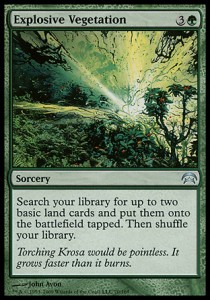
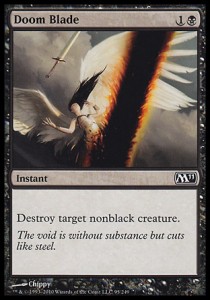
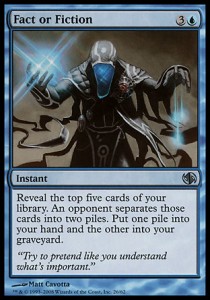
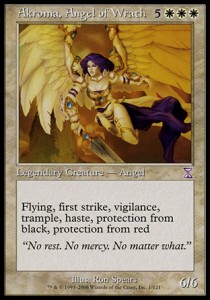
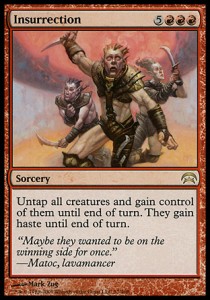
4 responses to “EDH Deckbuilding Fundamentals: The Five Things Every Deck Needs”
Love this basic outline of what to build for EDH decks. Some very good advice in here.
This is well put, through and through. In practice my playgroup doesn’t mind my combo finishers but I’d never get to pull them off without ramp, pressure and disruption. Great article!
Nice write-up! And yes, Genesis Wave is a beautiful card.
Thanks for the kind words, everyone! Especially MTGColorPie and Derfington – your own works have been a big inspiration for the genesis of this blog.